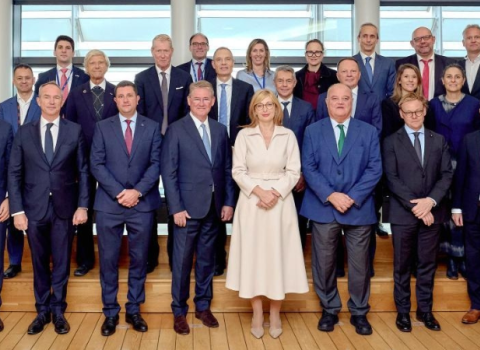
The European Court of Auditors says that ‘Networks of Excellence’ and ‘Integrated Projects’, two FP6 instruments designed to foster integration and coordination in Europe’s fragmented research sector and reach clearly-defined scientific and technological objectives, had only limited success. The Court makes a series of recommendations to the European Commission, many of which are relevant to the current Framework Programme 7.
“The report provides a picture with light and shade,” Massimo Vari, the member of the court who wrote the report, said at a press conference in Brussels. “The two instruments examined by the Court contributed to the general objective of promoting effective research collaboration and projects of reasonable quality, but their specific objectives were only partially achieved.”
The findings are embarrassing for the Commission, which devoted 75 per cent of FP6’s €17 billion budget to these much-vaunted initiatives, under the banner, “Integrating and Strengthening the European Research Area.”
Networks of Excellence, set out to “Overcome the fragmentation of European research” by, “Gathering the critical mass of resource” and “Gathering the expertise needed to provide European leadership,” in their field.
Examples include Marine Biodiversity and Ecosystem Functioning (MarBEF), a Network of Excellence consisting of 94 European marine institutes, that aims to integrate and disseminate knowledge and expertise on marine biodiversity; Prime, a Network of Excellence set up to develop long-term research and shared infrastructures on policies for research and innovation in the move towards the European Research Area; and the SCHEMA Network of Excellence which brings industrial partners, end users, universities and research centres in order to improve the systematic exchange of information on Content-Based Semantic Scene Analysis and Information Retrieval.
According to the report, few of the Networks resulted in self-sustainable, long-term research collaborations that could be continued without public support.
The report points to two factors that may help explain this finding: firstly, the need for a new approach to research collaboration to allow institutions that were previously in competition with each other to integrate successfully, and secondly, that some areas of research need a longer time span to achieve substantial integration.
The European Commission should assess on a case-by-case basis whether the Networks of Excellence financed under FP6 justify further funding under FP7, the Court said.
Other criticisms about of Networks of Excellence include most partners only making a small proportion of their research capabilities available to the Network and key, high-level scientists rarely being involved.
Meanwhile, Integrated Projects may achieved their aim of bringing together human, technical and financial resources around FP6 grants, but the projects failed to attract additional private and public funding, the Court of Auditors says.
Examples include SENSOR – Sustainability Impact Assessment, which set out to develop tools assessing the Environmental, Social and Economic Effects of Multifunctional Land Use in European Regions; and BioMinE, a project to research the integration of biotechnology-based processes for recovery and/or removal of metals from primary materials (ores and concentrates), and secondary materials (mining wastes, metallurgical slags, metal bearing scrap, power plant ashes).
The Court of Auditors focused its report on Networks of Excellence and Integrated projects as these were the most directly aimed at building the European Research Area, they received the lion’s share of FP6’s funds, and they financed a broad range of research activities from basic to applied research.
The report also underscored the limited progress made by FP6 in achieving the Lisbon objective of spending 3 per cent of GDP on R&D.
“Europe spent more than in the past, but the volume of own resources invested by the individual partners remained low,” said Vari. “This is the result of a decline in private participation, which affected SMEs in particular.”
The Court of Auditors also found evidence that, “EU funds simply substitute participants’ own resources,” and called on the Commission to examine the reasons for the low level of participants’ investment compared with the goals pursued, and suggest ways to get round this.
“FP6 alone, with its two new instruments, Integrated Projects and Networks of Excellence, is not the panacea for the challenges facing the European research landscape,” the Commission said in its reply to the court’s report. “The Commission believes that FP6 has provided a significant boost to research efforts and that the achievements of FP6 have been substantial.”
While the Networks of Excellence continue under FP7, the Integrated Projects have been replaced by Cooperative Projects. The report’s findings and recommendations are just as relevant to these new Cooperative Projects, Vari said.





 A unique international forum for public research organisations and companies to connect their external engagement with strategic interests around their R&D system.
A unique international forum for public research organisations and companies to connect their external engagement with strategic interests around their R&D system.